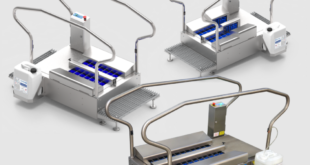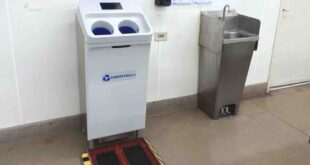Mark Burnett explains what engineers should be considering when choosing the lubrication for their machinery
At one point or another we’ve all been watching TV and seen a ‘survivalist’ who had caterpillars for breakfast frantically rubbing two twigs together to start a fire.
Which, I’m sure you’ll all agree, is a handy thing to know how to do if you ever find yourself shipwrecked on a desert island. However, in your industrial motors, a build-up of heat-generating friction is not your friend.
The expected lifespan of any motor can be significantly reduced from wear and tear caused by a lack of suitable lubrication. There are a number of unavoidable issues, such as the heat generated by friction, that can damage the gears and bearings in your motor and cause costly downtime and repairs.
The starting line
At NCH Europe we know that 70% of mechanical wear occurs on start up. Dry starts are responsible for wear such as cold-wear fusion, pitting and metal-particle contamination that causes foaming, oxidation and build up of acidic compounds and sludge.
Particulate build up will add to the problems friction causes, and everything will combine to slow down your motor, reduce the efficiency of your production line, affect accuracy and will eventually result in an expensive breakdown.
Not that this fact is anything new. According to a survey by machinelubrication.com, 81% of lubrication professionals have seen the effects of lubricant starvation in the machines at their plant.
However, that doesn’t mean that any old lubricant will do. It’s important to find an oil or grease, or a combination of the two, that can actually negate the specific problems that will arise in your plant.
Don’t feel the burn
Gears and bearings operating in areas with high ambient temperatures, such as a steel mill, need a lubricant that isn’t going to wilt at the first sign things are heating up.
Heat can accelerate oil decomposition, collapse oil films and accelerate abrasion and scuffing conditions, shorten the life of seals, cause separation of greases, and encourage the growth of microbial contamination.
If you know that your machinery is going to be getting hot under the collar, you can save yourself a lot of heartache by using oils and greases that contain appropriate additives that ensure they can perform under these conditions.
For instance, NCH’s K Nate grease has a melting point of over 290˚and our Top Blend oil has oxidation inhibitors and depressants in the mix that reduce heat stress.
Avoid washout
Whether as a result of humidity or contact with moisture used in your process, exposure to water can be a death knell for your lubricant of choice.
One of the biggest problems is emulsification of the oil or grease, which can greatly reduce the efficiency of the lubricant.
Water battling with lubricating oil can also lead to oxidation increasing tenfold, resulting in premature aging of the oil, particularly in the presence of catalytic metals such as copper, lead and tin.
In addition, certain types of synthetic oils react with water, which causes destruction of the base stock and the formation of acids.
Standard lithium grease products record around 10% in water washout tests and are prone to emulsify. To address this problem, we developed K Nate grease with a calcium sulfonate base, so it’s naturally water resistant, scoring 0.5%t in the washout test.
Stay put
Another common problem plant managers or engineers often face when it comes to lubrication is caused by the oil or grease itself. Being under pressure from moving parts often results in lubrication being squeezed out and moved away from where it is needed.
If this isn’t monitored, and the lubrication isn’t replaced, it can wreak havoc with bearings and gears. However, peace of mind isn’t impossible. When choosing a lubricant, be sure to look for something that contains tackifiers and additives that will ensure it stays in place – and don’t be afraid to ask for a demonstration to prove it works!
For instance, NCH’s K Nate grease contains adhesive polymers allowing it to stick to metal surfaces, and cohesive polymers that allow it to stick to itself. Our Top Blend oil contains similar additives, meaning it spreads across moving metal surfaces for full and even lubrication, and any one of our reps can easily demonstrate these properties at the drop of a hat.
Last longer
The bottom line is that lubrication is about more than just gear oil, it’s about taking care of your machinery so that it performs at its best for longer.
By taking a little time to investigate whether the lubricants you’re using include additives that will make certain it performs under any conditions, you can save time, money and headaches down the line.
Using an oil such as NCH’s Top Blend, which includes adhesive polymers, anti-foam and anti-friction additives, emulsifiers, shock lead reducers and leak inhibitors, will significantly increase the life span of your machines with less work for you.
In fact, we’ve done the research and have shown that the additives we’ve used in Top Blend makes it last four times longer than competitors and carries on working for up to 8,000 hours.
So if your lubricant can’t stand the heat, get it out of the kitchen and employ something that can make sure you don’t get burned.
Mark Burnett is VP of the lubricants and fuel additives innovation platform at NCH Europe.
 Engineer News Network The ultimate online news and information resource for today’s engineer
Engineer News Network The ultimate online news and information resource for today’s engineer




